Folklore consists of things like legends, stories and fairy tales that go through generations of a community or a culture through oral words. The word folklore highlights an enormous and significant part of the culture. The tradition of oral history runs deep through many cultures. Folklore is often associated with mythology and is believed to be associated with creatures, ghosts and witches. Although some folklore relates to this, it is not always the case. American folklore contains developed folk traditions from 16 th century Europeans and Native American legends. The tradition of oral history is seen by some as old-fashioned or used by the uneducated, but in reality this belief is untrue. Folklore is really about stories and the past, but it is just as much about the present, because it is a central part of life for many people. Some stories that are written down are made up of true stories with extra exaggerations, and others are completely invented. Folk tales are passed down from generation to generation and usually have characteristics from the time they were told. Often, stories can be universal and timeless. Many of the stories have helped shape the belief system and culture of America. A subcategory of folklore is a form of storytelling called high stories. High stories arose when men at the border wanted to gather and tell stories. A high story in itself is a story with incredible elements, but in a relatable setting. Many were true stories with exaggerated details about what happened.
Paul Bunyan
Paul Bunyan is a giant lumberjack who symbolizes strength and vitality. The stories that came together to form the Paul Bunyan legend are mostly from the tradition of high stories about borders. Frontier number stories depicted the wild adventures of exaggerated folk heroes like Paul Bunyan. The high stories were valued more for their imaginative qualities than for the literal meaning of the story. Many of Paul's stories describe how he created things like Puget Sound, the Grand Canyon and the Black Hills. It is said that Paul Bunyan was delivered to his parents in Bangor, Maine by five large storks. In his stories, Paul is usually accompanied by Babe the Blue Ox on his adventures. Paul's story originates from North American lumberjacks and was later popularized by the author William B. Laughead. Paul Bunyan was used to understand how many natural landmarks were created. One of his stories is how he, with a turn in the ax, created the Grand Canyon. Another story is that the footprints of his bull Babe were filled with water, and that's how Minnesota got its 10,000 XNUMX lakes. Many of the published stories about Paul Bunyan are long fairy tales, but his original stories among the people at the border were short anecdotes. Historians believe that the story of Paul Bunyan was based on a real lumberjack named Fabian Fournier. Fournier was a French-Canadian carpenter who moved south to Michigan after the Civil War. He was six feet tall and at that time the average male height reached about five feet tall. There were many stories that he drank and fought when he was not working with timber. America's love of high history can be seen through the many statues created for Paul Bunyan across the country.
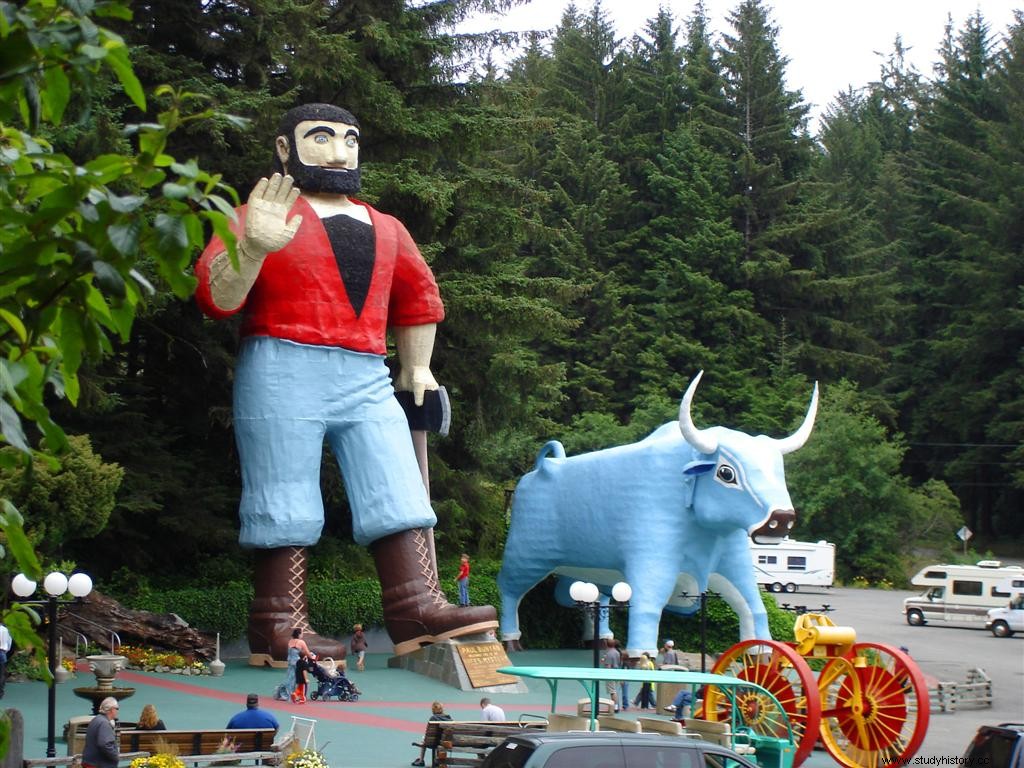
John Henry
The story of John Henry is unlike many others from his time because it is a bit based on facts. This is because it was probably a man named John Henry who was born a slave in the South around the middle of the 19th century. The story of John Henry says that he was a six foot tall and over 200 kilos man. If this is true, he would definitely have worked in unusually physically challenging jobs such as building railways or tunnels. That means if he existed, he would have worked on the Big Bend Tunnel that ran through the mountains of West Virginia. According to legend, he had an incredible skill in hammering a steel drill into stone to make holes for explosives to blast stone for railway tunnel construction. To test his incredible strength and skill, he drove a steam-powered rock drill to see who could drive inserts and blast rock faster. In the story, John Henry ends up beating the machine in a speed competition, only to die of heart failure after the victory. The original story of John Henry was told through classic blues folk songs that come in many forms. Today, history exists in many different forms of books, plays and novels.
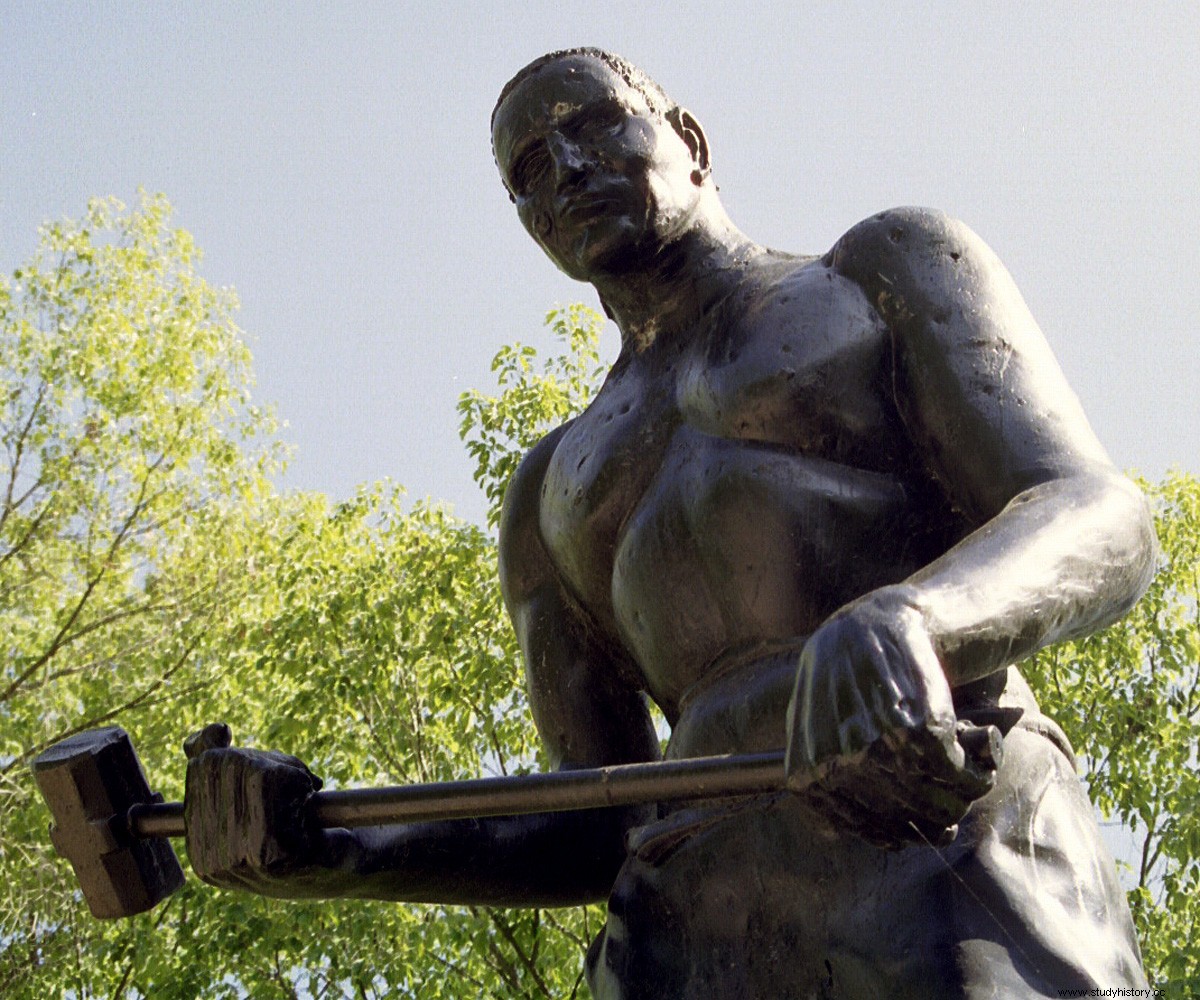
Johnny Appleseed
Johnny Appleseed was an American pioneer who introduced apple trees to states such as Pennsylvania, Ohio, Indiana, Illinois and northern parts of what is now West Virginia. He became a legend during his life by being so kind and generous. However, he was not born Johnny Appleseed. John Chapman was born in Massachusetts in 1774 and eventually his story became the legend we know as Johnny Appleseed. A popular image of Johnny Appleseed is that he spreads apple seeds wherever he goes. He was also known for his Christian preaching. He wanted to preach the gospel on his travels and work for Christian missionaries to convert people to Christianity. Appleseed was also well respected by many Native American tribes at the time and was known to have been a catalyst for peace between the tribes and white settlers. March 11 th is sometimes celebrated as Johnny Appleseed Day.
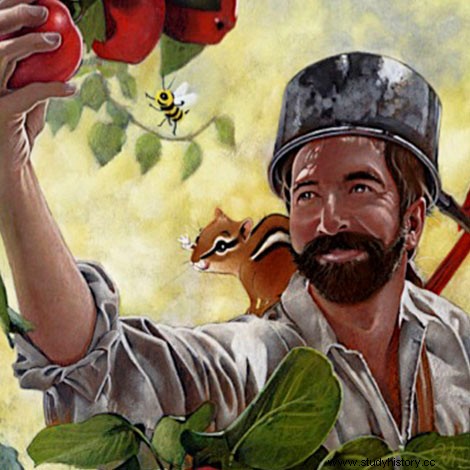
Davy Crockett
Davy Crockett was born in 1796 and was legendary without the fictional details of his folktales. Crockett himself claimed to have killed a bear on his own at the age of three. Whether this is true or not, no one knows for sure. However, this is noticeable for most of his stories. Most of Davy Crockett's exaggerated stories include things like fighting bears or playing with boulders as children. Davy grew up in the mountains of Tennessee, but probably had an adventurous life, but his stories may have some adjustments to make them more interesting to the audience. Some stories include that he married a woman named Sally Ann Thunder Ann Whirlwind. Her stories included that she was a gunslinger, a fast-talking woman. She was known for helping Davy get out of sticky situations and matched his desire for adventure. The most famous depictions of Davy Crockett include his iconic coonskin hat and his "Old Betsy" rifle. Crockett and his stories were so famous that he became a legend in his own lifetime. His home state of Tennessee published A Tale of David Crockett's Life in 1834. He was already a folk hero in his home state, and eventually became one of the most famous men in the nation. His story really flourished in the 1950s. The song, "The Ballad of Davy Crockett", was number one in the nation for several weeks in 1955. Young boys across the country wore their famous coonskin hood and Davy Crockett goods earned $ 100 million.
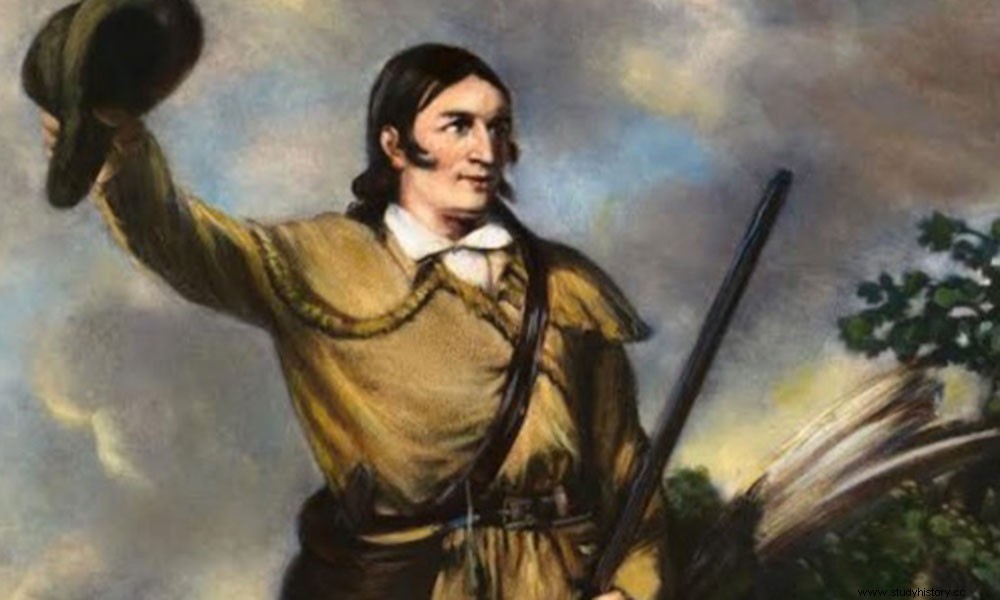
Mike Fink
Mike Fink was also called "the king of keelboats." He was a kind of legendary fighter and riverboatman. During his time he was known to be a tough and hard-drinking man. His profession operated keelboats up and down the Ohio and Mississippi rivers. It was believed that Fink was born in Fort Pitt, which is now Pittsburgh, Pennsylvania. Fink was believed to be an exceptional shooter even though he drank hard. People claimed that even after drinking a liter of whiskey, he could still "shoot the tail of a pig in 90 steps". When he began his career in navigation, he had a reputation for fighting those he was not entertained with. Records show that he was 6'3 and weighed 180 pounds, which would have made him a very formidable opponent. He was also notorious for his practical jokes. Most of Mike Fink's written appearances are dated before the Civil War. He was like Davy Crockett in the way of being an adventurous man, but he lacked many of Crockett's admirable traits. His improbable move turned him into the bully of history. Eventually, his character type was undesirable to the public, and most of the stories about Mike Fink died out after the Civil War. Fink reappeared in popular culture by appearing on Davy Crockett's TV show produced by Disney. He was portrayed as the exact opposite by Davy Crockett. Fink was even popular enough to have Mike Fink Keel Boats at Disneyland and at Liberty Square at Magic Kingdom at Disney World.
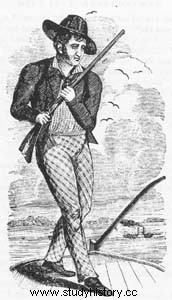
Gamle Stormalong
Old Stormalong's story began with him on the shores of Cape Cod as a baby eighteen feet tall. Eventually he grew out of Cape Cod and moved to Boston. In Boston, he boarded his first ship at the age of twelve. His full name was Captain Alfred Bulltop Stormalong. His stories revolve around nautical themes because he is believed to be a thirty foot tall sailor. He was captain of a ship called Kurs which was so high that it had to hang the masts to avoid hitting the moon. Stormalong had a lifelong rivalry with Kraken, a great sea monster from Norse mythology. It is rumored that Stormalong's ship, Kurs, created the Panama Canal by crashing into the coast of Panama. The student was also believed to have created the White Cliff of Dover. According to legend, the ship was stuck in the English Channel, and to get it for free, the crew had to use soap. The soap and scraping are what are believed to make the clips white. Captain Stormalong's death is argued for. Some believe it happened after a transatlantic race against a steamship captain. Stormalong won the race by several miles, but died after completing the race. Others believe a hurricane in Florida blew him and his ship up into the sky. Another death story was that he ate something that killed him. Stormalong was known to have a huge appetite, so that's probably what started this death theory. The name Stormalong first appeared in sea towns dating back to the 1830s, but high-profile stories about Stormalong first appeared in the 1930s.
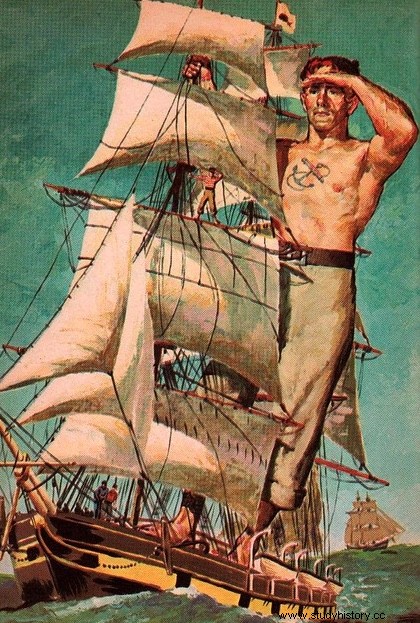
Pecos Bill
Peco's Bill was a fictional cowboy whose story was set during the American Western expansion. Telling the stories of Peco's Bill was an oral tradition among cowboys during the expansion to the west and the buildings to the southwest. According to legend, he created landmarks such as the Gulf of Mexico. The story goes that there was a terrible drought in Texas, so Peco's Bill went to California and lasso a storm to bring it back to Texas. The storm brought so much rain that it filled the Gulf of Mexico. Another of his stories is how he created the Rio Grande River. On an adventure, Pecos Bill and his horse were stranded in the desert and in desperate need of water, so Pecos Bill took a stick and dug the Rio Grande River. Another landmark Pecos Bill was responsible for creating is Painted Desert. The story goes that Peco's Bill shot at an Indian tribe, and as they ran away, their ritual paint ran and painted the desert. Peco's Bill's origin story begins with his family crossing the Pecos River where he got lost and then was raised by a pack of coyotes. He grew up to be a cowboy who used a rattlesnake as a lasso.

Daniel Boone
Daniel Boone was an American pioneer and frontier man. His stories made him one of the first folk heroes in the United States. Boone, in folklore-high stories, is depicted as a buck-clad warrior who can fight Indians or a fierce grizzly bear. When he was shown as a simple man, Daniel Boone did not need much more than the Bible and the gun. Folklore Daniel Boone is not the same as Daniel Boone in real life. His fame can be attributed to his hunting and pioneering expeditions through Cumberland Gap. His stories were adjusted and exaggerated to create the legend known today.
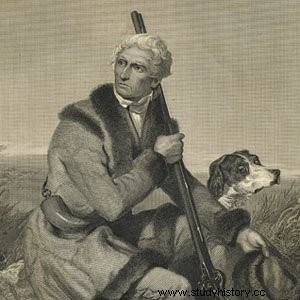
the conclusion
All of these high stories had their moments of popularity in American history. The art of oral storytelling created some of the most famous or iconic characters in our culture. Anthropologists studying American culture need to know how much folklore has influenced culture. Many of the high stories I mentioned above had a period of rebirth in popularity after the original creation. This shows its eternal effect on American popular culture. Folklore has engraved itself in American culture, while most of these names are still known by people today. Many of the great stories depict tough and adventurous men. This type of character is still popular and beneficial in many popular stories today.
Related:
Myths and legends in English folklore
